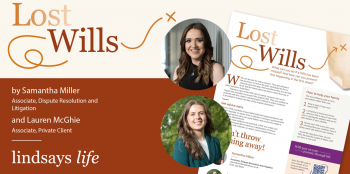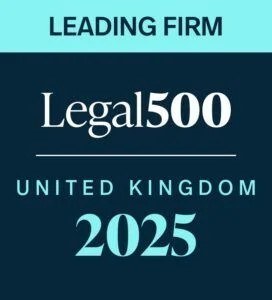Sequestration can be an incredibly challenging experience, especially when the cost of living continues to soar. Should you qualify, it is sometimes possible to recall personal bankruptcy. Brian Pollock explains.
Statistics published by the Accountant in Bankruptcy in August 2022 show that personal insolvencies have increased by circa 8% in the past year. These figures are expected to increase as many individuals find themselves in difficult financial circumstances fuelled by the ‘cost of living crisis’, rising energy costs and successive interest rate rises.
Understandably, personal sequestration (or bankruptcy) can be daunting for the individual concerned. However, there is potentially light at the end of the tunnel and it is possible to recall an award of sequestration in certain circumstances.
What is the effect of recall of sequestration?
When an award of sequestration is recalled, the aim is to put the debtor back into the position they would have been in if sequestration had not been awarded sooner than would otherwise be the case. In effect, the debtor will resume control of their personal finances and restrictions imposed by sequestration will be rolled back.
It’s worth noting that recall does not wipe the slate clean completely - details of sequestration will remain in the Register of Insolvencies which may affect the debtor’s credit rating. However, the relevant entry will be marked as recalled.
Who can apply for recall of sequestration?
Subject to the specific circumstances, the debtor, the Accountant in Bankruptcy, trustee in sequestration, a creditor, or any other person with an interest in the sequestration can apply for recall of sequestration.
How do you apply for recall of sequestration?
Recall of sequestration can be applied for via two routes:
- by application to the Accountant in Bankruptcy (AIB); or
- by petition to the relevant Sheriff Court.
1. Application to the AIB
The first option, application to the AIB, is the most common and preferred route to applying for recall of sequestration in most circumstances. It is available when the debtor has paid, or is able to pay, their debts in full.
To be in a position to exercise this option, it is advisable for the debtor to cooperate with the appointed trustee in sequestration by providing complete and accurate details of the debtor’s financial affairs, including identifying creditors, debts and assets. Once the trustee has collated this information and notified the relevant creditors/ potential creditors (including HMRC), the trustee will produce an account of the sums to be paid by the debtor for them to be in a position to apply for the sequestration to be recalled (sometimes referred to as a ‘recall breakdown’). This will include outstanding debts due to creditors and the trustee’s fees.
Once the relevant sums have been paid, either directly to creditors or to the trustee, it may then be possible to apply to the AIB for recall of the sequestration. It is possible to apply prior to the debts being repaid so long as it can be evidenced that the debtor is in a position to do so within 8 weeks of making the application.
The process involves completing a form detailing the circumstances in which recall is sought. This must then be submitted to the AIB and intimated to relevant parties including the debtor (if not the applicant), the petitioning creditor, any party who concurred in the debtor’s application for sequestration and the trustee in sequestration (if not the AIB).
The notice intimating the application to the above parties must also advise them of their right to make representations to the AIB in relation to the application within 21 days beginning with the day on which the notice is given.
2. Petition to the relevant Sheriff Court
Petitioning the Court is generally only an option when grounds for recall apply other than the ground that the debtor has paid, or is able to pay, the debtor's debts in full.
Circumstances in which this option may apply include:
- The debtor was not apparently insolvent when sequestration was awarded.
- Sequestration was awarded following a petition of a qualified creditor/ qualified creditors.
- The majority in value of the creditors reside in a country other than Scotland.
- The debtor had already been sequestrated when the award was granted.
Costs
In addition to the cost of settling the relevant debts, including the trustee’s fees, if an application is made to the AIB to recall an award of sequestration, an administration fee of £100 is incurred in addition to solicitors’ fees (as the case may be).
Petitioning the Court is a more costly route as substantive court procedure may be required.
If you require assistance with recalling an award of sequestration, our dispute resolution and litigation team may be able to help. Our lawyers can liaise with your trustee in sequestration; preparing, lodging and intimating a recall application to the AIB; or can petition the Court on your behalf.
For further information on the services our dispute resolution and litigation team can provide, please click here.






